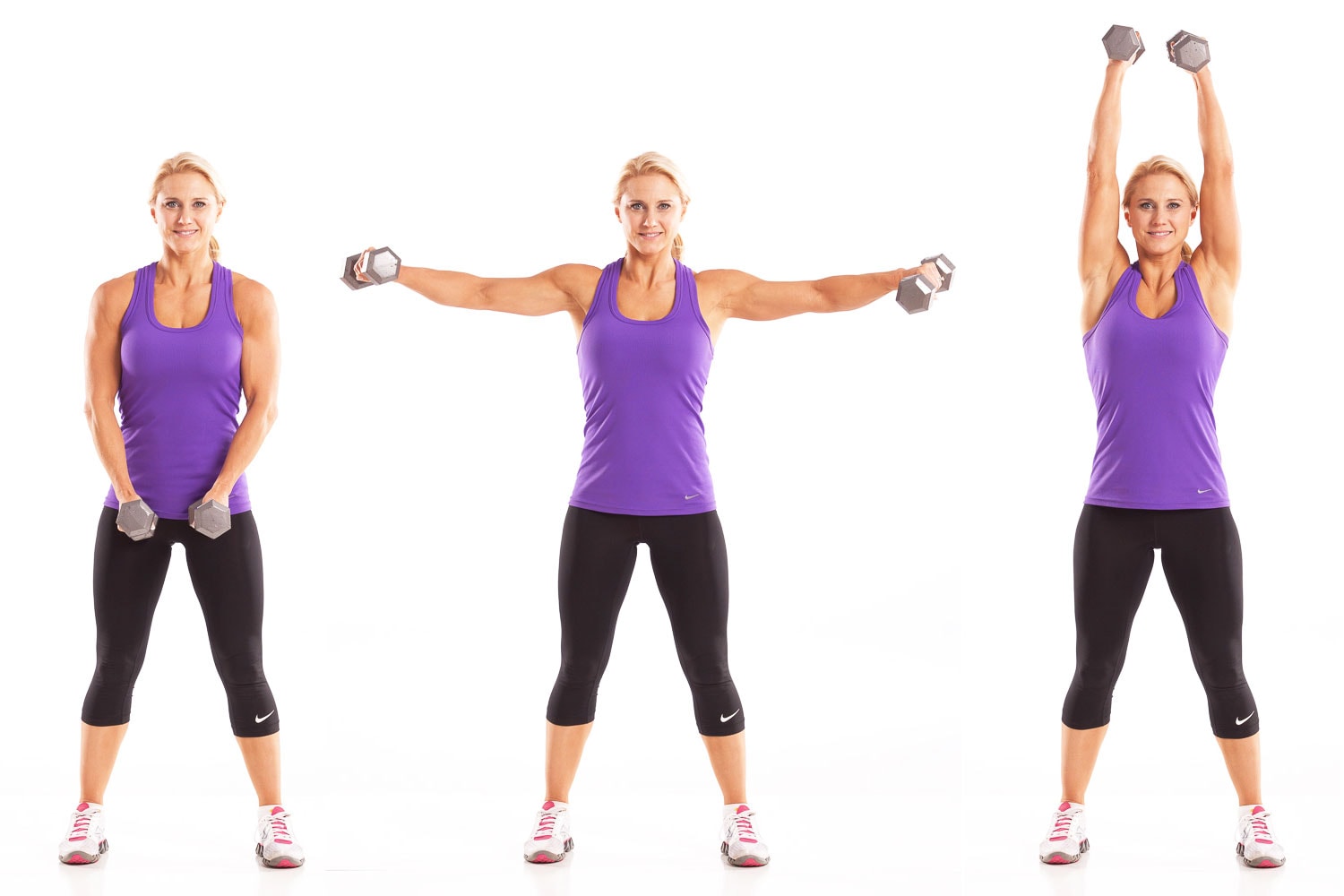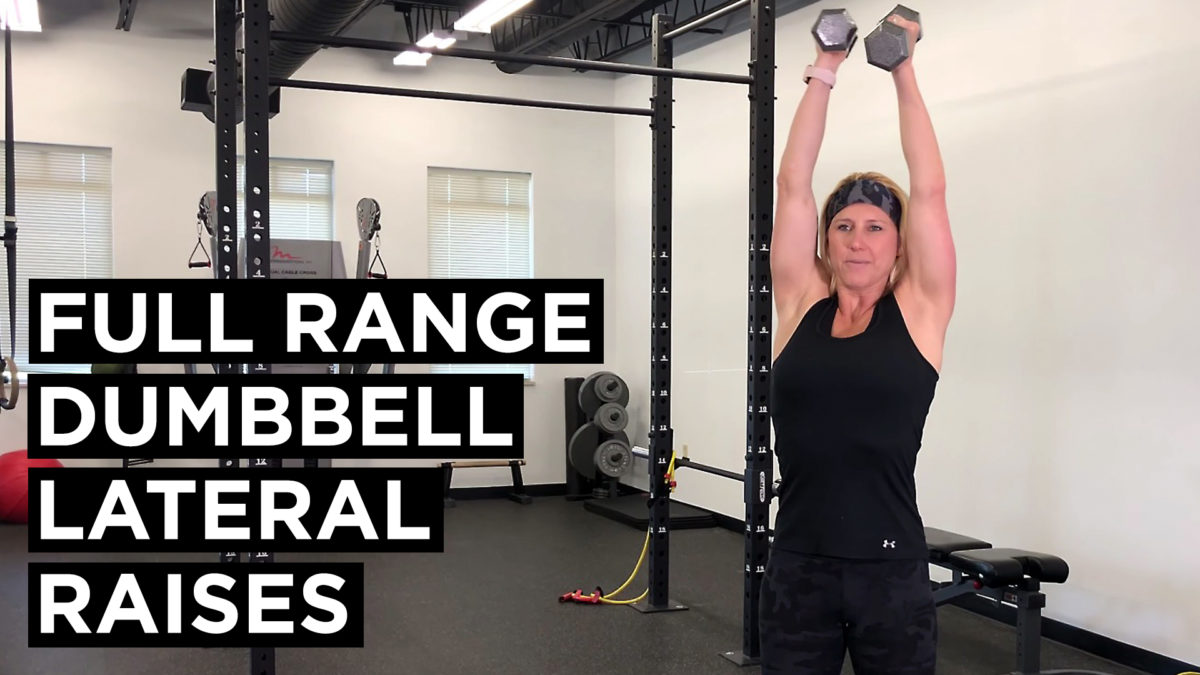Full Range Lateral Raises | Full ROM Lateral Raises
Full Range Lateral Raises, commonly referred to as Full ROM (Range of Motion) Lateral Raises or 3 Way Lateral Raises, are an essential exercise in the realm of strength training and body conditioning. This exercise is a staple in shoulder workouts, targeting the deltoid muscles with a focus on enhancing shoulder mobility and stability. The incorporation of Full Range Lateral Raises into a fitness regimen is not just about building muscle; it’s about nurturing the intricate shoulder joint, which is pivotal for a wide range of daily activities and athletic movements. As one of the most versatile joints in the human body, the shoulder plays a crucial role in various functional movements, making its strength and flexibility vital for overall physical health.
The significance of incorporating Full Range Lateral Raises goes beyond mere aesthetics. These exercises are instrumental in preventing injuries, improving posture, and aiding in the performance of compound movements that involve the upper body. Strengthening the shoulders through exercises like Full ROM Lateral Raises contributes to a more balanced muscular development, ensuring that the body’s kinetic chain functions harmoniously. In an era where sedentary lifestyles are prevalent, exercises focusing on shoulder health are more crucial than ever. They counteract the negative effects of prolonged sitting and computer use, which often lead to poor posture and weakened shoulder muscles.
How to do 3 Way or Full Range Lateral Raises
Step-by-step instructions for Full ROM Lateral Raises | 3 Way Lateral Raises
- Select two dumbbells of a suitable weight. I recommend you start with lighter weights and plan to do 10 to 12 repetitions for one to three sets of exercises. A suggested starting weight for this exercise is with 5-8 pound dumbbells for beginning women. Don’t lift weights that are too heavy. You can work up over time as you build strength.
- Stand with feet about shoulder-width apart. Keep the back straight and feet planted flat on the floor. Your arms holding weights should hang down just in front of your hips.
- As you begin the 3 Way Lateral Raise, hold the dumbbells perpendicular to the plane of your hips, palms facing each other. Ensure that you have a firm grip.
- Brace the abdominal muscles and raise the chest upward keeping a neutral spine and tight core.
- Lift the weights upward to the sides with slightly bent elbows, to reduce the stress on the joints.
- When the arms are approximately horizontal to the floor begin to rotate the weights so your palms are facing forward.
- Continue to raise the weights overhead while turning your palms towards each other as you complete the overhead movement with dumbbells touching each other.
- Return the dumbbells to the starting position slowly at the thighs with a slow and controlled motion while exhaling.

Julie Lohre, IFBB Fitness Pro demonstrates Full Range Lateral Raise or the 3 Way Lateral Raise Exercise.
What Muscles Do Full Range Lateral Raises Work?
Full ROM Lateral Raises are a comprehensive exercise primarily targeting the muscles in the shoulders, with secondary effects on other upper body muscles. The primary muscles worked are:
- Deltoids: The main focus of Full Range Lateral Raises is on the deltoid muscles, which are composed of three distinct heads:
- Anterior Deltoid (Front Deltoid): While this part is less activated compared to the other heads in this exercise, it still plays a role in stabilizing the movement.
- Lateral Deltoid (Middle Deltoid): This is the primary muscle worked during the lateral raise. It’s responsible for the abduction of the arm away from the body, giving the shoulders their rounded appearance.
- Posterior Deltoid (Rear Deltoid): Although it’s less targeted than the lateral deltoid, the posterior deltoid still engages during the exercise, especially at the end of the movement when the arms are at the peak of elevation.
- Trapezius: The trapezius muscle, especially its upper fibers, assists in this exercise. It aids in elevating the shoulder blade (scapular elevation) and plays a key role in stabilizing the shoulder girdle.
- Supraspinatus: Part of the rotator cuff, the supraspinatus muscle is involved in the initial phase of arm abduction. It works in conjunction with the deltoids to lift the arm.
- Serratus Anterior: This muscle helps in upward rotation and protraction of the scapula. It activates during Full Range Lateral Raises to stabilize the scapula and ribcage.
- Rotator Cuff Muscles (Infraspinatus, Teres Minor, and Subscapularis): These muscles, while not the primary focus, are engaged to stabilize the shoulder joint throughout the movement.
Secondary engagement is also seen in:
- Forearm Muscles: Involved in gripping the weights.
- Core Muscles: The core (including the abs and lower back) activates to stabilize the body during the exercise.
It’s important to note that while 3 Way Lateral Raises predominantly target the shoulders, the involvement of other stabilizing muscles makes it a valuable exercise for overall upper body strength and stability.
How do I increase the isolation with Full ROM Lateral Raises?
If you would like to really isolate your shoulders more so, try this movement seated on an exercise bench Seated version allows better isolation and keeps you from using upper body momentum to affect the movement.
What level exerciser should include shoulder exercises like the Full ROM Lateral Raises?
Intermediate -The full range dumbbell lateral raise is a basic weight lifting exercise that is great for intermediate through advanced weight lifters.
What is the difference between a Full Range Lateral Raise and a traditional Lateral Raise?
In this version of the dumbbell lateral raise, you start with dumbbells in each hand at thigh level. You raise the dumbbells until your arms reach parallel to the floor and then bring them completely overhead, then returning slowly to the starting position to complete one exercise repetition. You can use this exercise in an upper body workout to build your shoulder strength and muscle size. If you are having trouble stabilizing your body in a standing position, you can utilize a bench with a back support to complete the exercise using strict form and less body movement.
Find out more about Online Personal Training with Julie


